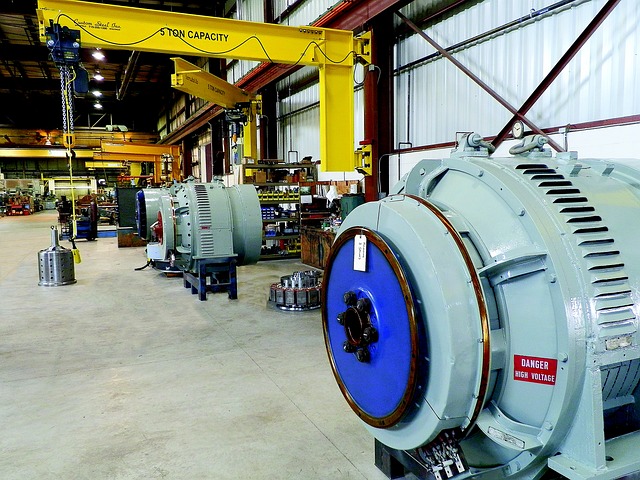To ensure your refrigerator operates efficiently and conserves energy, it's essential to regularly inspect and maintain the door seal. Over time, this seal can degrade, leading to increased energy consumption as the fridge works harder to maintain temperatures. Look for visual signs of damage or check with the dollar bill test to determine if the seal is properly sealing. If the bill slips in too easily, the seal likely needs repair or replacement. Regular cleaning and alignment checks can prevent minor issues from escalating. While some wear can be mitigated through maintenance, eventually, the seal may require refrigerator repair or replacement, especially if it's past its typical lifespan of 5 to 10 years. Proactive maintenance extends the life of the door seal and helps you save on energy bills by maintaining your refrigerator's energy efficiency. Remember to refer to the manufacturer's guidelines for specific repair instructions, and consider replacing the gasket with a new one that fits your model if necessary. By keeping the seal in good condition and ensuring the door closes properly, you can avoid unnecessary energy loss and keep your food safely chilled without driving up utility costs.
When confronted with the chill of your refrigerator or the unexpected warmness of its contents, it’s often a sign that your door seal—a critical barrier against energy loss—needs attention. This article delves into the essentials of maintaining your refrigerator’s efficiency through proper door seal repair and replacement. We’ll guide you through identifying signs of wear that signal energy loss, provide a detailed repair process for common issues, determine when it’s time for a new seal, and offer tips to prevent future failures. Master these strategies for refrigerator repair to ensure your appliance operates at peak performance, saving you energy and money in the long run.
- Assessing Seal Damage in Your Refrigerator: Identifying Signs of Energy Loss
- Step-by-Step Guide to Repairing Common Door Seal Issues in Refrigerators
- When to Replace Your Refrigerator's Door Seal: Understanding the Lifespan and Wear Indicators
- Tips for Preventing Future Seal Failures and Maintaining Energy Efficiency in Your Fridge
Assessing Seal Damage in Your Refrigerator: Identifying Signs of Energy Loss

When it comes to maintaining energy efficiency in your home, assessing seal damage on your refrigerator is crucial for preventing unnecessary energy loss. Over time, seals around your fridge’s door can degrade, leading to air leakage and causing your appliance to work harder to maintain the desired temperature. To identify potential issues, regularly inspect the rubber gasket that lines the interior side of the door. Look for cracks, tears, or compressions that could be allowing warm air to seep in. If you notice these signs, it’s likely that refrigerator repair is needed to restore its energy efficiency. Additionally, check if the door seal adheres securely when closed; a loose seal can similarly compromise insulation and increase energy consumption. To test the seal’s integrity, close the door on a dollar bill or a piece of paper halfway, then attempt to pull it out. If the bill slides out with ease, the seal is not forming a tight enough barrier, indicating that refrigerator repair, potentially including replacement of the gasket, is in order to prevent energy loss and ensure your fridge operates efficiently. Regular maintenance and prompt repairs can extend the lifespan of your appliance and save on utility bills by keeping cold air inside where it belongs.
Step-by-Step Guide to Repairing Common Door Seal Issues in Refrigerators

When refrigerator door seals become faulty, they can lead to significant energy loss and compromise the appliance’s efficiency. To address common door seal issues effectively, a step-by-step guide is essential for DIY enthusiasts and homeowners seeking to maintain their refrigerators’ optimal performance. The first step involves inspecting the seal for visible signs of wear or damage, such as cracks, tears, or detachment from the door frame. If the seal is flexible and can be repaired, gently clean the gasket with a mild detergent and a soft cloth to remove any debris or buildup that might affect its functionality. Next, check for proper alignment by trying to slide a dollar bill or a similar-sized piece of paper between the door and the seal; if it slides in easily, the seal likely needs repositioning or tightening. For seals that cannot be repaired, replacement is necessary. Remove the old gasket carefully, taking note of how it was attached, to ensure a proper installation of the new one. Once the new door seal is in place, test its effectiveness by closing the door firmly and checking for a tight, consistent seal around all sides. Regular maintenance can prevent minor issues from escalating into costly repairs, ensuring your refrigerator operates efficiently and keeps your food at the correct temperature. Remember to follow the specific instructions provided by the manufacturer for your particular model of refrigerator when performing repair tasks.
When to Replace Your Refrigerator's Door Seal: Understanding the Lifespan and Wear Indicators

When a refrigerator’s door seal starts to deteriorate, it can significantly impact your appliance’s efficiency and your energy bills. A faulty door seal can cause cold air to escape, leading to increased energy consumption as the fridge works harder to maintain its temperature. Typically, the lifespan of a refrigerator door seal ranges from 5 to 10 years, depending on usage and maintenance. However, even if your seal is within this age range, it’s important to regularly inspect it for signs of wear that might necessitate refrigerator repair. Look for common indicators such as visible cracks, rips, or excessive wear that prevents the seal from creating a tight, airtight barrier. If you notice condensation between the door and the interior of the fridge, or if you can easily pull the seal away from the door without much force, it’s a clear sign that the seal has lost its integrity and should be replaced to prevent energy loss. Regular refrigerator repair and maintenance can extend the life of your door seal, but when it’s time for a replacement, ensuring the seal is in top condition is crucial for optimal appliance performance and cost savings on your electricity bills.
Tips for Preventing Future Seal Failures and Maintaining Energy Efficiency in Your Fridge

Regular maintenance and timely repairs are key to ensuring your refrigerator’s door seals function optimally and prevent energy loss. To maintain energy efficiency in your fridge, begin by inspecting the door seal monthly for any signs of wear or damage. Look for cracks, tears, or deformations that might compromise the airtight barrier. If you detect any issues, address them promptly with refrigerator repair techniques. Clean the gasket regularly with warm, soapy water and a soft cloth to remove accumulated grime, which can impede its sealing ability. Additionally, ensure the door aligns correctly with the frame; misalignment can strain the seal and lead to premature failure.
To further enhance energy efficiency and prevent future seal failures, consider installing a new gasket if yours is over five years old or exhibits frequent leaks. When purchasing a replacement seal, select one that’s specifically designed for your model of refrigerator to ensure a proper fit. During the refrigerator repair process, take the opportunity to check the threshold where the door closes—a bent or misshapen threshold can also cause sealing problems. Lastly, keep an eye on the hinges and any moving parts; wear and tear here can affect the door’s ability to close properly, which in turn impacts the effectiveness of the seal. Regular upkeep, including tightening loose screws or adjusting hinges as needed, contributes to a longer lifespan for your fridge’s door seal and helps preserve the cold environment necessary for food safety and energy conservation.
Effective management of your refrigerator’s door seal is pivotal for maintaining its energy efficiency and longevity. Regular assessments can help identify seal damage early, allowing for timely repairs or replacements as detailed in the article’s guide and lifespan analysis. By following the recommended steps for repair and adopting preventative measures to safeguard against future issues, you can significantly reduce energy loss and optimize your refrigerator’s performance. Remember, a well-maintained door seal isn’t just about saving energy; it’s a crucial aspect of refrigerator repair that contributes to the overall functionality and reliability of your appliance.
